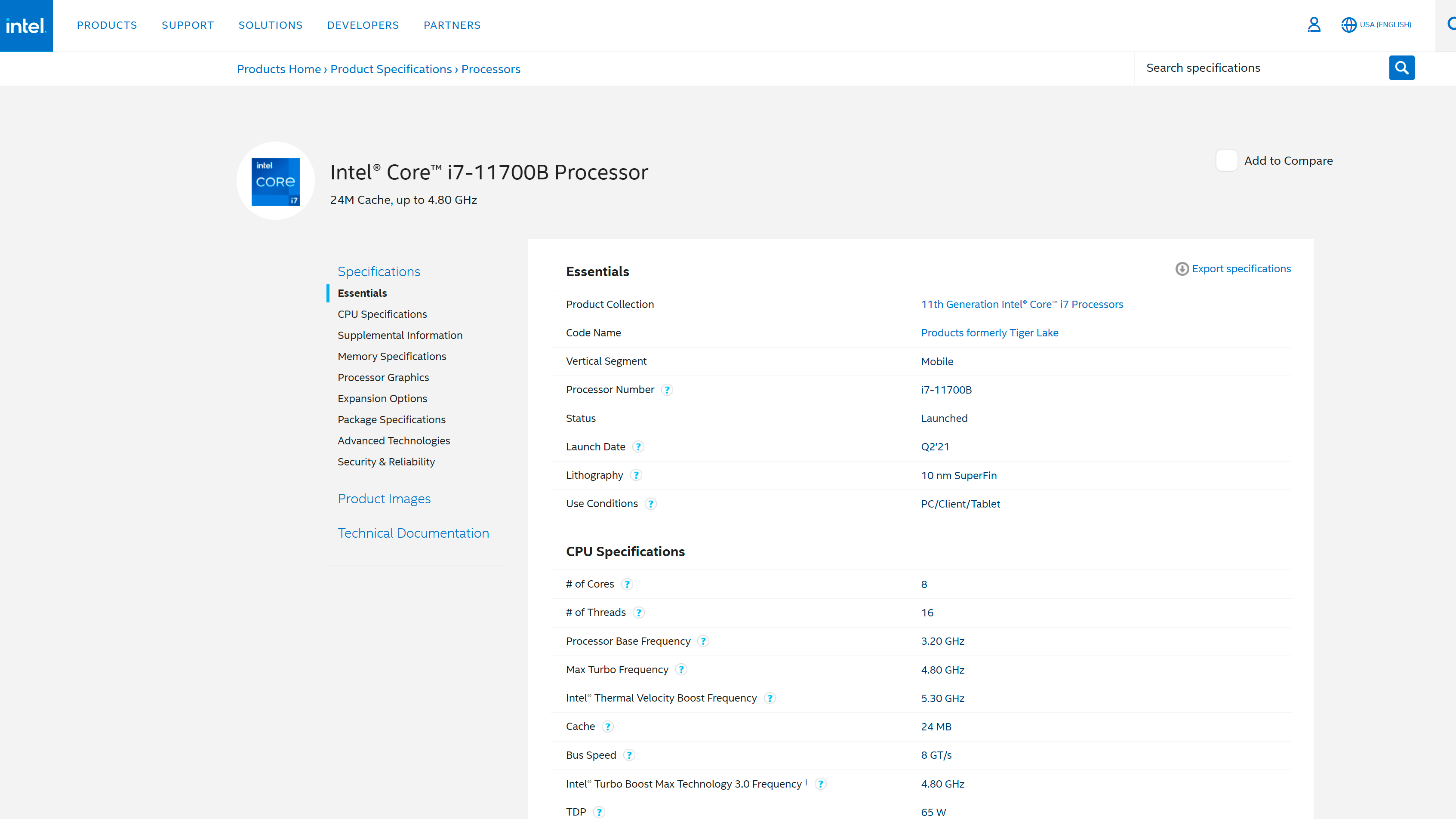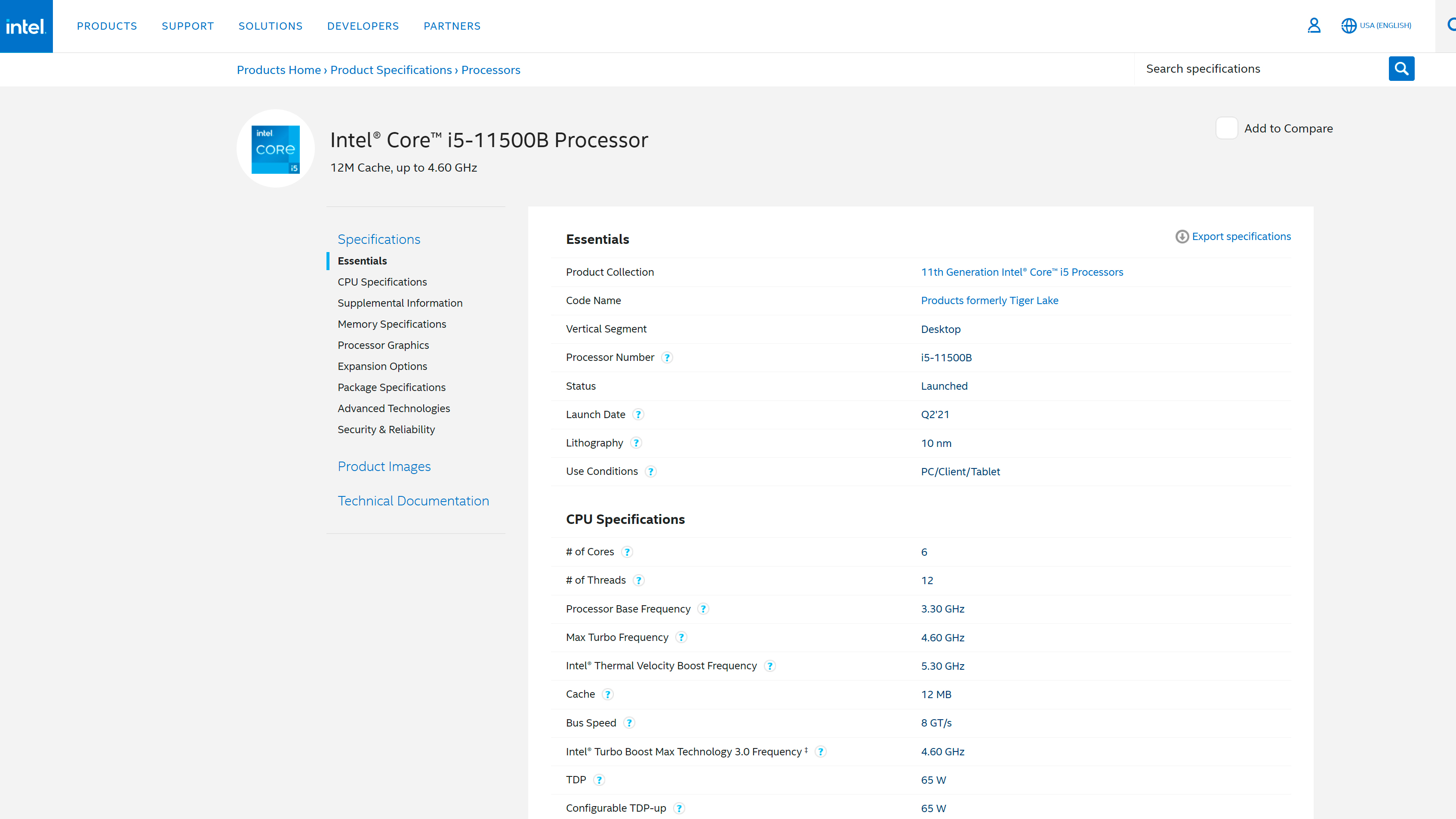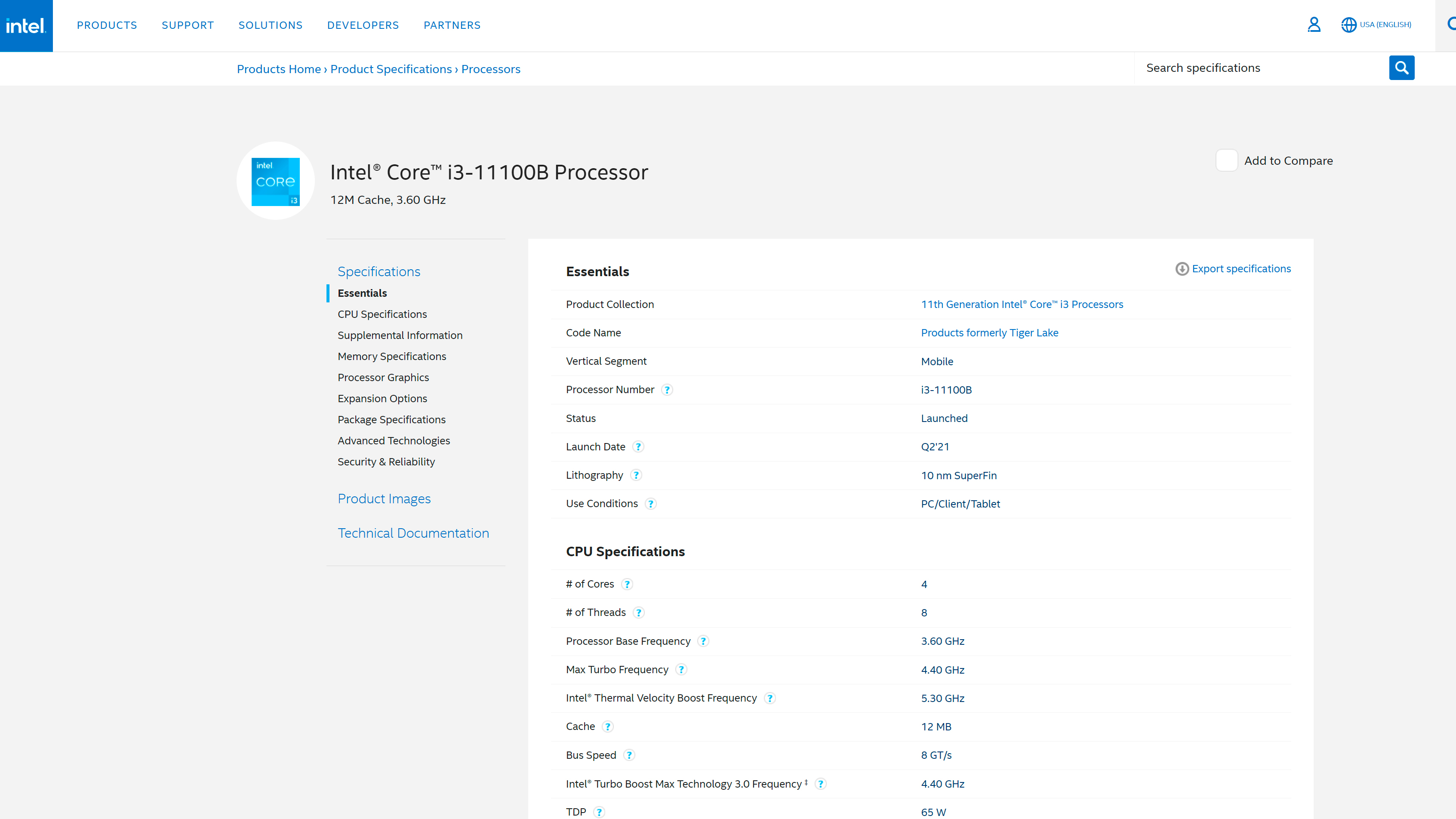Update 28/05/2021 3:13 pm PT: Intel has provided us with the following statement that sheds more light on the latest Tiger Lake desktop processors:
"Intel has partnered with customers interested in expanding their product portfolio with enthusiast, small form-factor desktop designs. The Intel Core i9-11900KB processor is a BGA solution built with unique specifications and performance specifically for these designs."
Update 28/05/2021 11:13 am PT: Intel has updated the product pages for the Tiger Lake B-series processors to confirm that they are indeed desktop processors. We've amended the article to reflect the change.
Original Article:
If you think Intel was done with Tiger Lake, then you have another thing coming. The chipmaker has unceremoniously posted four new Tiger Lake chips (via momomo_us) in its ARK database. Apparently, the processors are already launched.
The quartet of new processors are listed under the Tiger Lake family, with the 11th Generation moniker. However, they carry the "B" suffix, which is a designation that Intel hasn't used until now. We're unsure of what the letter stands for. The product pages for the Core i9-11900KB, Core i5-11500B, Core i7-11700B and Core i3-11100B have the aforementioned processors as desktop chips. Nevertheless, the "B" is rumored to BGA (Ball Grid Array), which makes sense since Intel doesn't specify a type of socket for the B-series parts. There's a possibility that these processors are soldered to the motherboard via the BGA package.
The core configurations for the listed Tiger Lake processors stick to Intel's guidelines. The Core i9 and Core i7 are equipped with eight cores and 16 threads, but with clock speeds as the main differentiating factor. The Core i5 and Core i3 SKUs arrive with six-core, 12-thread and four-core, eight-thread setups, respectively. It would appear that the Tiger Lake B-series processors benefit from Thermal Velocity Boost (TVB), though.
Get Tom's Hardware's best news and in-depth reviews, straight to your inbox.
Intel Tiger Lake B-Series Specifications
| Processor | Cores / Threads | Base / Boost / TVB Clocks (GHz) | L3 Cache (MB) | TDP (W) | Graphics | Graphics Base / Boost Clocks (MHz) | RCP |
|---|---|---|---|---|---|---|---|
| Core i9-11900KB | 8 / 16 | 3.3 / 4.9 / 5.3 | 24 | 65 | Intel UHD Graphics | 350 / 1,450 | $417 |
| Core i7-11700B | 8 / 16 | 3.2 / 4.8 / 5.3 | 24 | 65 | Intel UHD Graphics | 350 / 1,450 | ? |
| Core i5-11500B | 6 / 12 | 3.3 / 4.6 / 5.3 | 12 | 65 | Intel UHD Graphics | 350 / 1,450 | ? |
| Core i3-11100B | 4 / 8 | 3.6 / 4.4 / 5.3 | 12 | 65 | Intel UHD Graphics | 350 / 1,400 | ? |
Since the B-series all enjoy a 65W TDP, it's common sense that they are faster than Intel's recently announced Tiger Lake-H 45W processors. The 20W margin allows the B-series access to TVB after all, which can be a difference maker in certain workloads. According to the Intel's specification sheets, only the Core i9-11900KB and Core i7-11700B can be configured down to 55W. The Core i5-11500B and Core i3-11100B have a fixed 65W TDP.
The Core i9-11900KB is the only chip out of the lot that comes with an unlocked multiplier. The octa-core processor appears to feature a 3.3 GHz base clock, 4.9 GHz boost clock and 5.3 GHz TVB boost clock. Despite the Core i9-11900KB and the Core i9-11980HK having the same maximum 65W TDP, the first leverages TVB to boost to 5.3 GHz, 300 MHz higher than the latter.




Comparing from tier to tier, we're noticing higher base clocks on the B-series SKUs. The difference is between 400 MHz to 700 MHz, depending on which models you're looking at. Obviously, TVB gives the B-series higher boost clocks on paper. If we don't take TVB into consideration, the improvement is very little. For example, the Core i7-11700B has a 4.8 GHz boost clock speed, only 200 MHz higher than the Core i7-11800H. The Core i5-11500B is rated for 4.6 GHz boost clock, 100 MHz faster than a Core i5-11400H.
It seems that Intel only made improvements to the processing aspect of the B-series. The iGPU and Tiger Lake's other features look untouched. Like Tiger Lake-H, the B-series also comes with native support for DDR4-3200 memory and a maximum capacity of 128GB. However, the B-series seems to offer less memory bandwidth. For comparison, Tiger Lake-H delivers up to 51.2 GBps of maximum memory bandwidth, while the B-series tops out at 45.8 GBps.
It's unknown what Intel's intentions are for the Tiger Lake B-series lineup. Given the 65W TDP, it's reasonable to think that Intel launched the new processors to compete with AMD's Ryzen 5000G (codename Cezanne) desktop APUs that will eventually make their way to the DIY market.

Zhiye Liu is a news editor, memory reviewer, and SSD tester at Tom’s Hardware. Although he loves everything that’s hardware, he has a soft spot for CPUs, GPUs, and RAM.
-
spongiemaster Reply
Seems more likely to be for SFF/NUC systems. They're all listed as desktop CPU's, not mobile CPU's in their ARK pages.Admin said:Intel lists new Tiger Lake processors with a mysterious "B" suffix.
Intel Lists 65W B-Series Tiger Lake CPUs With Very High Clocks : Read more -
cyrusfox Makes you really question why Rocket lake was released, and why we won't see a desktop refresh till Alder lake. Guess it is likely due ot 14nm vs 10nm capacity. These would have been much better than Rocket lake.Reply -
spongiemaster Reply
Intel approved Rocket Lake development in early 2019. Before even Zen2 CPU's had been released, so Intel had no idea what they were going to be competing against from AMD. By the time Zen3 CPU's released late last year, it was too late to cancel Rocket Lake.cyrusfox said:Makes you really question why Rocket lake was released, and why we won't see a desktop refresh till Alder lake. Guess it is likely due ot 14nm vs 10nm capacity. These would have been much better than Rocket lake. -
purple_dragon It would be a nice gesture from Intel to bring these to the current LGA 1200 socket.Reply -
dehjomz Reply
It would an extremely nice gesture, or they could also bring a derivative of Alder Lake to LGA1200 as well… I see no reason why Z590 lives for barely 6 months…before new cpus that don’t support it come to market.purple_dragon said:It would be a nice gesture from Intel to bring these to the current LGA 1200 socket. -
InvalidError Reply
Intel gave up on 10nm two years ago, moving most new investments towards 7nm instead of scaling 10nm up, so I doubt it has anywhere near enough 10nm volume to handle a full-scale transition to Alder Lake.cyrusfox said:Makes you really question why Rocket lake was released, and why we won't see a desktop refresh till Alder lake. Guess it is likely due ot 14nm vs 10nm capacity.
I suspect Rocket Lake exists mainly because Alder Lake will be nearly unobtainable and overpriced, albeit possibly not quite as bad as Broadwell. -
spongiemaster Reply
Delays in getting Rocket Lake to market pushed the releases closer together. I'm still skeptical we will see desktop Alder Lake this year. Intel may announce it this year, like they did Rocket Lake late last year, but I doubt there will be "normal" availability until well into 2022.dehjomz said:I see no reason why Z590 lives for barely 6 months…before new cpus that don’t support it come to market. -
NightHawkRMX Intel has done that before.Reply
Z370 coming within the same year as z270 and completely messing up any backwards compatibility. -
zodiacfml 10nm is truly an evolution of 14nm, or a two year gap in traditional Intel tick/tock. The i3-11100 is a small upgrade to my i3-8100, same TDP, same base clock. Multi-threading is a good upgrade though for highly threaded workloadsReply -
TerryLaze Reply
They didn't have a full-scale transition to Rocket Lake yet either (only i5 and above) and RL had a reduced core count for the i9 on top.InvalidError said:Intel gave up on 10nm two years ago, moving most new investments towards 7nm instead of scaling 10nm up, so I doubt it has anywhere near enough 10nm volume to handle a full-scale transition to Alder Lake.
I suspect Rocket Lake exists mainly because Alder Lake will be nearly unobtainable and overpriced, albeit possibly not quite as bad as Broadwell.
They might not have enough 14nm volume right now because of how the market is.
Or you could say that they switched 14nm production to 10nm and that's why, both statements would be completely speculative.
Rocket Lake exists because intel can sell it and make money from it, plain and simple. Alder Lake might not even be marketed towards the desktop market, just like the J CPUs when they where first introduced and everybody thought that it would be the end of socketed CPUs, turned out they where a small niche CPU.